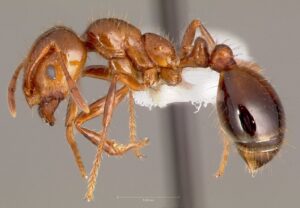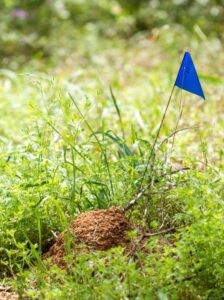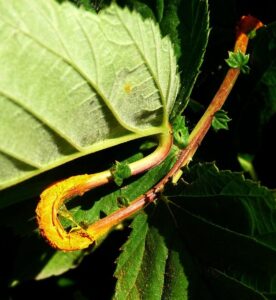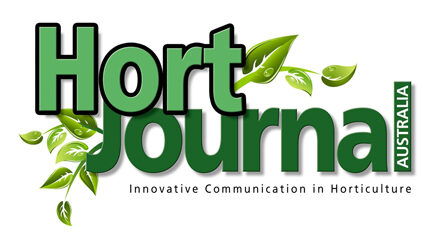
Preparing for climate-driven pests and diseases
By Patrick Regnault
Horticultural pests and diseases are constantly evolving, and increasingly so in the face of anthropogenic climate change. This global phenomenon is also changing the natural range of pests and diseases. What might this mean for Australia, and what can we do about it as an industry?
We can see what happens when an exotic pest successfully enters Australia. Let us take the red imported fire ant (Solenopsis invicta) as an example. This invasive species was first detected in Brisbane on 22 February 2001, how and when it arrived is conjecture. What happened since this fire ant was first detected is factual. The main reasons for the lack of success in eradicating this ant is a paucity of surveillance, funding and long-term strategy, in short, a political and bureaucratic failure. The cost of dealing with fire ants, if they ever succeeded in establishing and spreading over a large area, would dwarf any money that could have been spent on eradication from the onset.

Pests are now adapting to climate variation much faster than anticipated. They can produce far more generations in a shorter amount of time and extend their range considerably with even small variations in temperatures or humidity. Many pests and diseases are currently restricted by their need to overwinter: rising temperature or humidity would result in an expansion of their range. On the other hand, the same rise in warming can lead to some pathogens being restricted or even reduced. For instance, the rust fungus, Triphragmium ulmariae, which infects meadowsweet (Filipendula ulmaria), has been disappearing from some areas over the past 30 years due to rising summer temperatures.
Climate change is also affecting more than temperature and humidity. Recorded data shows that solar radiation and wind have been altered with a notable influence on both terrestrial and aquatic plant ecosystems, one result being an increase in the number of algal blooms in the latter. Whilst an increase in ultraviolet radiation can inactivate certain pathogens, increased cloud cover and wind speeds limit light and radiation augmenting the risk of plant pathogen outbreaks. Changes in wind patterns can spread pathogens over very long distances, reestablishing diseases where host plants are seasonally absent leading to founder effects where atypical pathogen genotypes cause epidemics1.
The spread of horticultural pests and diseases across the globe will have varying impacts depending on the climate zone. From studies conducted in Europe and South America, we may infer what the effects of climate change on the movement of pest and disease in Australia will be:
- For temperate zones: Increased risk of insect pests and plant diseases, southward shift of insect pests, pathogens, weeds in managed and unmanaged ecosystems, and range expansion of important pests and diseases.
- For subtropical zones: Increased saturation of insect pests and diseases flowing south from the tropics and warmer subtropics.
- For tropical zones: This area is subject to greater uncertainty, with a possibility that supra-optimal would see a decrease in insect pest risk. Opinions are conflicted with regards to disease risk in these zones.

The industry has a blind spot with regards to climate adaptation, especially in relation to pest and disease management. In my experience, some individuals in the ornamental plant sector are noticing the changes in plant growth, weed infestation, and pest and disease adaptation. However, the horticultural industry is generally far too silent and unwilling to be vocal to use its power to create or force necessary policy change.
Funding in research and mitigation measures is dependent on political decisions. Our political leadership, and in some places the horticultural industry, is in total or partial denial of the very real risk posed by a warming climate. We cannot expect them to take constructive measures to tackle the effects of the planetary warming on ecosystem and food security. Lack of vision is a lack of adaptability.
It is too late to stop the climatic changes that are underway. Climate adaptation is the
way forward, changes that a new generation of horticulturists will have to deal with. It
is time for a generational renewal of the leaders in our industry. Age may bring
wisdom, but that is no guarantee, and also a reluctance to upset the status quo. To find new ways to deal with the situation we are facing requires fresh vision and a fearlessness that is far more common in younger people. Biosecurity will be the new real threat to people and the environment, not to mention our industry. Money spent on education, prevention and eradication will pay dividends in the long term.
References
1. Lahlali, R., Taoussi, M., Laasli, S.-E., Gachara, G., Ezzouggari, R., Belabess, Z., Aberkani, K., Assouguem, A., Meddich, A., El Jarroudi, M., & Ait Barka, E. (2024). Effects of climate change on plant pathogens and host-pathogen interactions. Crop and Environment, 3 (3), 159–170.
Patrick Regnault FAIH RH0062
Interactive Landscapes
